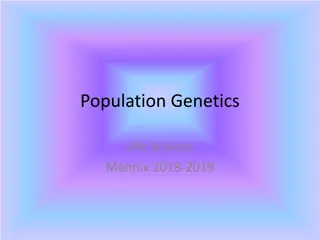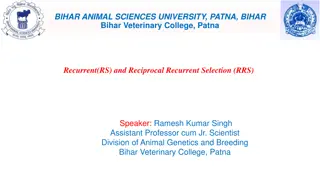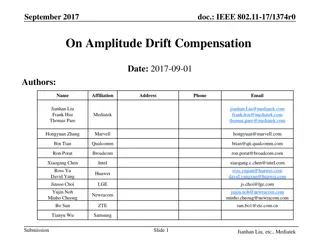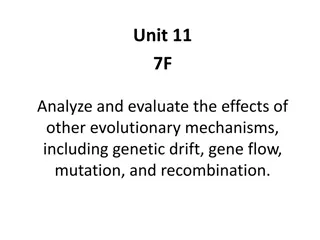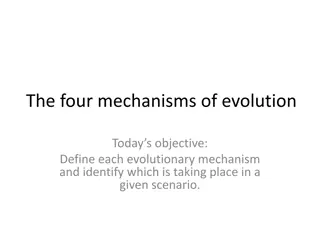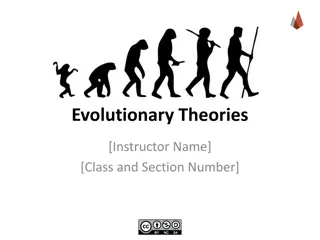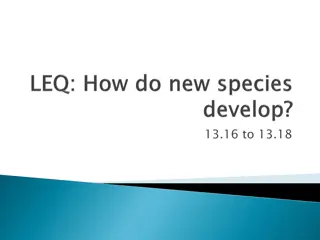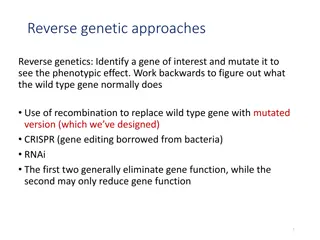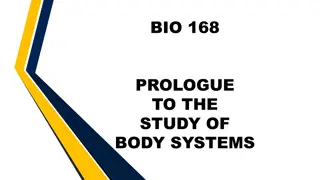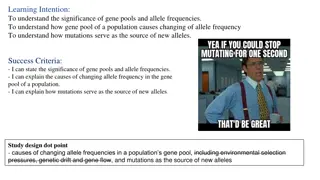Understanding Evolutionary Mechanisms: Natural Selection, Genetic Drift, and Gene Flow
Exploring the forces behind evolutionary change, this content delves into natural selection, genetic drift, and gene flow. Examples such as the bottleneck effect, founder effect, and Amish population polydactylism are presented to illustrate how these mechanisms shape genetic diversity. The impact of events like human predation, island colonization, and transgenic plant interactions on gene pools is also discussed.
Download Presentation

Please find below an Image/Link to download the presentation.
The content on the website is provided AS IS for your information and personal use only. It may not be sold, licensed, or shared on other websites without obtaining consent from the author. Download presentation by click this link. If you encounter any issues during the download, it is possible that the publisher has removed the file from their server.
E N D
Presentation Transcript
3 causes of evolutionary change: 1. Natural selection 2. Genetic Drift 3. Gene Flow
Change in the gene pool of a population due to chance Genetic Drift
Northern elephant seal population reduced to about 20 individuals in the population due to human predation. Population allowed to recover. The DNA of 24 genes studied found no variation / only one allele for each gene. Genetic drift resulting from a drastic reduction in population size Bottleneck Effect Example
Random change in the gene pool that occurs in a small colony of a population 1814 15 people founded a British Colony on Tristan da Cunha. One person carried a recessive allele for retinitis pigmentosa (progressive form of blindness). In the 1960 s the island descendants were samples of 240 individuals, 4 had the disease. The frequency for the disease is much higher among islanders than the area from which the founders came. Founder Effect Example
Gain or loss of alleles from a population by the movement of individuals or gametes into or out of the population Human movement today promotes gene flow; no Gene Flow Example
Which type of event explains the high incidence of polydactylism found in the Amish population? Founder Effect
Flower population: ww = white flower; WW and Ww = purple flower; a mud slide wipes out most of the white flowered plants. What type of event occurred? Bottleneck
Genetic modifications from transgenic plants passed to neighboring populations of wild relatives. What type of event occurred? Gene Flow
Millions of greater prairie chickens once lived on the prairies of Illinois. As these prairies were converted to farmland and other uses during the 19th and 20th century, the number of greater prairie chickens plummeted to less than 50 individuals. The few survivors have low levels of genetic variation. What type of event occurred? Bottleneck
This event resulted in the world wide spread of several insecitcide-resistance alleles in the mosquito Cluex pipiens, a vector for West Nile virus and Malaria. What type of event occurred? Gene Flow
Reduction in geographic variation in the appearance of humans is caused by what type of event? Gene Flow
A few weeks after two major hurricanes swept through the Caribbean islands, fishermen on the island of Anguilla observed a large raft float to the shore. Green iguanas were seen on the raft. These iguanas are thought to have come from the islands of Guadeloupe. The allele frequencies for the founding population on Anguilla differed from those on Guadeloupe. What type of event occurred? Founder Effect
Humans on the island of Pingelap Atoll in the South Pacific suffered the effect of typhoon followed by a famine around 1775. Only about 20 people out a population of several thousand managed to survive. One of the survivors carried a color blindness allele. In today s population on this island, over 1 in 20 people is afflicted with color blindness well over 20%. In the original population about 2.5% of the people had this form of color blindness. What type of event occurred? Bottleneck








